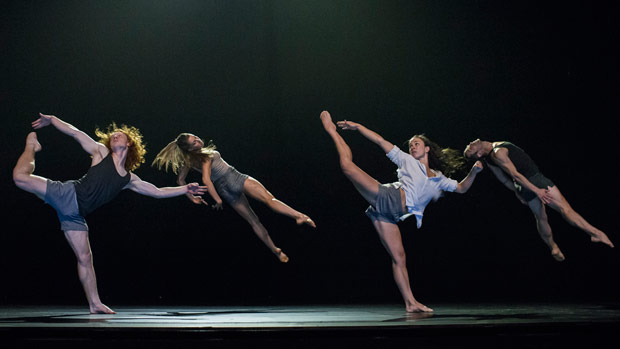
© Peter Greig. (Click image for larger version)
Sydney Dance Company
CounterMove: Cacti, Lux Tenebris
★★★✰✰
Sydney, Roslyn Packer Theatre,
29 February 2016
Interview: Alexander Ekman, choreographer of Cacti
www.sydneydancecompany.com
www.roslynpackertheatre.com.au
It would be hard to find two more diverse works on the one program than those in CounterMove, the first program for 2016 from Sydney Dance Company. Cacti, Alexander Ekman’s international hit (at least with most audiences, if not all critics) opens the program; Lux Tenebris, a new work from Rafael Bonachela, closes it.
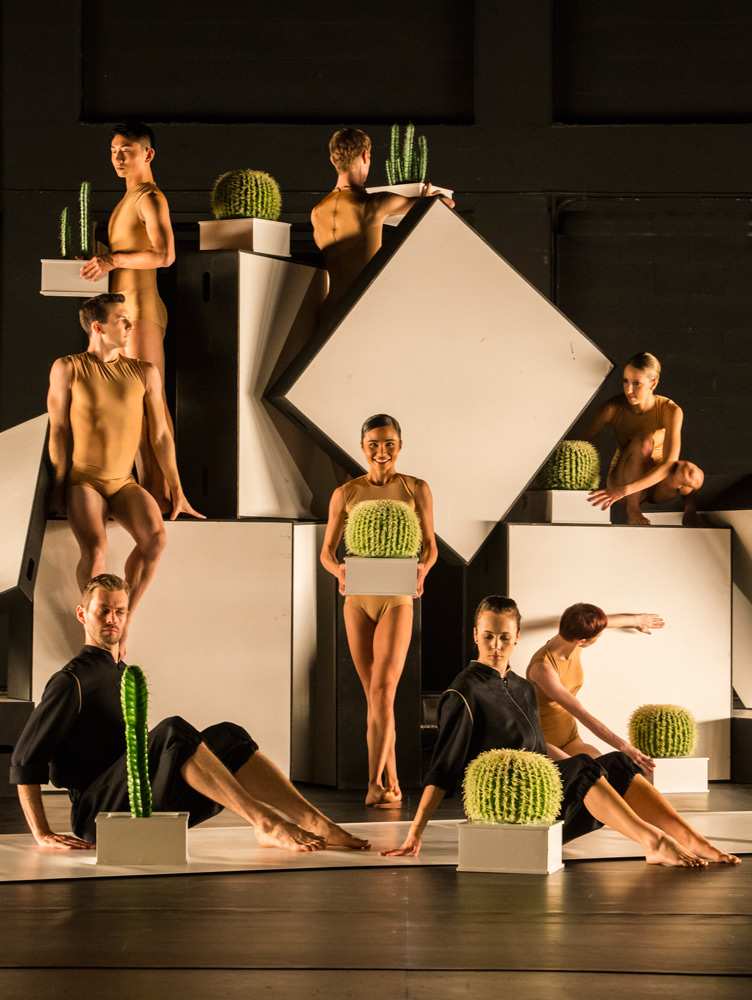
© Peter Greig. (Click image for larger version)
Cacti is now well-known as Ekman’s reaction to what he regarded as some unfair criticism of his work by certain dance critics. Technically it is full of fast-paced, synchronised movement with the dancers frequently performing on, and sometimes manipulating, low white platforms. They are something akin to small, individual stages and there are some amusing moments involving these platforms as the dancers tip them this and that way. There are also some remarkable moments as the dancers go through their paces on top of the platforms, often in perfect unison. The work is danced to selections of music from several eras, some of it played live on stage by a string quartet, and is lit with flair by Tom Visser.
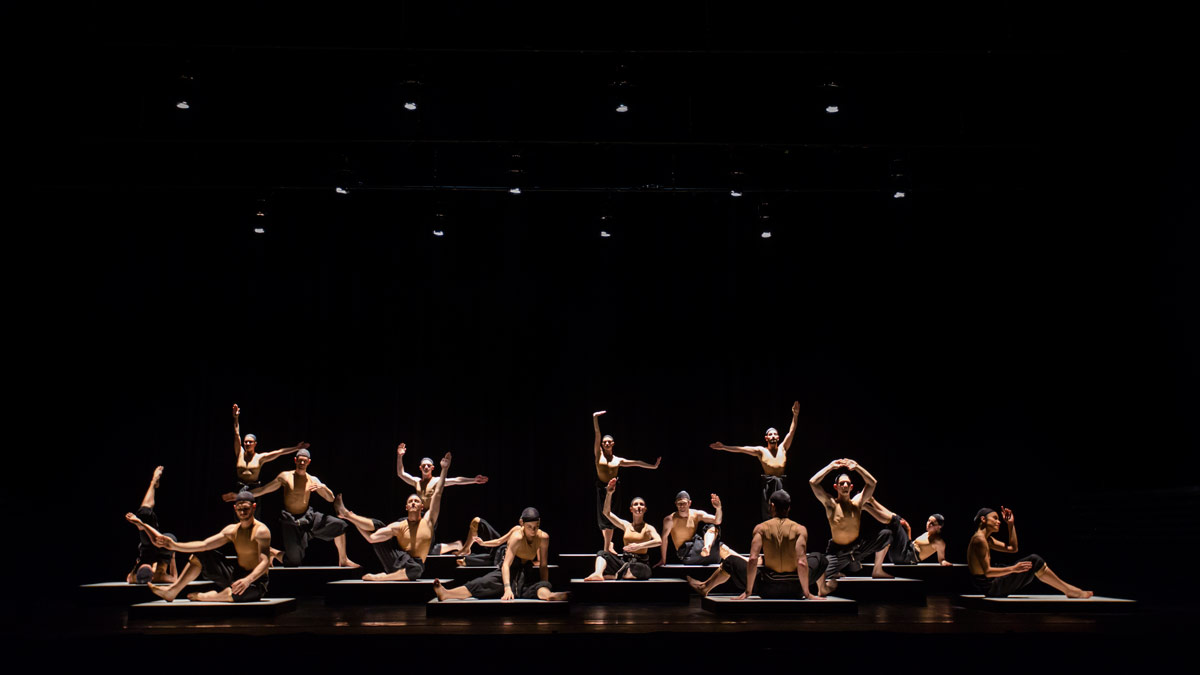
© Peter Greig. (Click image for larger version)
The work’s major interest lies in the way Ekman has handled his reflections on the fact that we all see art differently, and on the role of the critic in debates about art. As the work unfolds we hear a voice, the voice of a critic, pontificating about the meaning of what we are seeing on stage. The words are flowery to say the least and provide many reasons for the audience to dissolve into laughter. But the voice-over also causes me to speculate as much as anything else on the difference between the written and the spoken word because this voice-over has a particularly pompous quality to it that perhaps would not be as apparent in a written review. It’s a smart ruse by Ekman.

© Peter Greig. (Click image for larger version)
An interlude with a slightly different message appears midway through the piece. Two dancers rehearse a duet and, as they go through the motions, we hear them discuss the process via a recorded text. It is a very matter of fact analysis of the work and suggests another idea – that choreography loses some emotional appeal when it descends into humdrum analysis.
But the focus soon centres on a collection of potted cacti. There is one cactus per dancer and each dancer treats the cactus lovingly as a personal work of art. The role of the cacti becomes most apparent in the closing scene. As the voice of the critic suggests (more than once) that the work is finished, the dancers advance to the front of the stage, displaying their potted cactus and beaming and smiling with pride at their precious work of art. Again it is a clever ploy that makes us laugh. But at the same time the message is there and the question is posed. Who judges and do they have the right?

© Peter Greig. (Click image for larger version)
Lux Tenebris is, as with all Bonachela’s choreography, the result of his focus on abstract ideas. This time Bonachela homes in on the notion that light and darkness can alter how we perceive space and bodies within a given space. It is a serious work, intellectually demanding and often confronting. The score, commissioned from composer Nick Wales, is not easy listening and at times seems almost to destroy itself such is its concentration on pulling sounds apart so that they almost lose their definition. The lighting by Ben Cisterne often shines glaringly into the eyes of the audience, so it can be quite hard to see the shape of the choreography in the gloom, which is disconcerting despite the fact that this is meant to be. The costumes by Aleisa Jelbart are mixed in fabric, cut and design. They often look like industrial workplace garb.
Within this somewhat disarming setting of sound, light (or lack of it) and costume, the dancers must perform some of the most physically demanding choreography I have seen from Bonachela. Bodies contort and fall into some surprising shapes. A series of solos highlights the exceptional skills of the company’s current crop of dancers – Cass Mortimer Eipper particulary caught my eye on opening night – and in the sections for larger groups, two double quartets, which we see individually and together, stand out for the visually attractive way they occupy Cisterne’s rectangles of light.

© Peter Greig. (Click image for larger version)
Cacti is fun, Lux Tenebris is challeging. Cacti is entertaining. Lux Tenebris asks much more of the audience. Both have their place although I found the grinding and relentless feeling of Lux Tenebris hard going at times. Too much tenebris and not enough lux perhaps? But what binds the evening together is the quality of the dancing. The dancers of Sydney Dance are astonishing in both works and there seems to be no end to their physicality, their speed, their precision and their powerful commitment to dance.










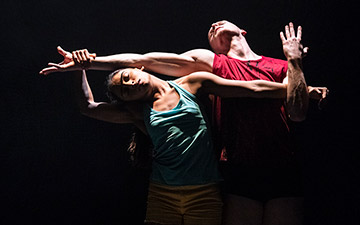


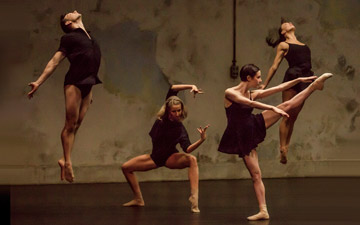
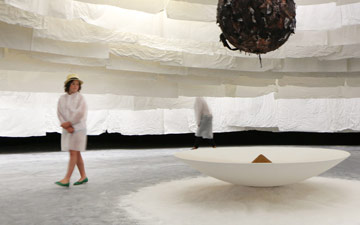


You must be logged in to post a comment.